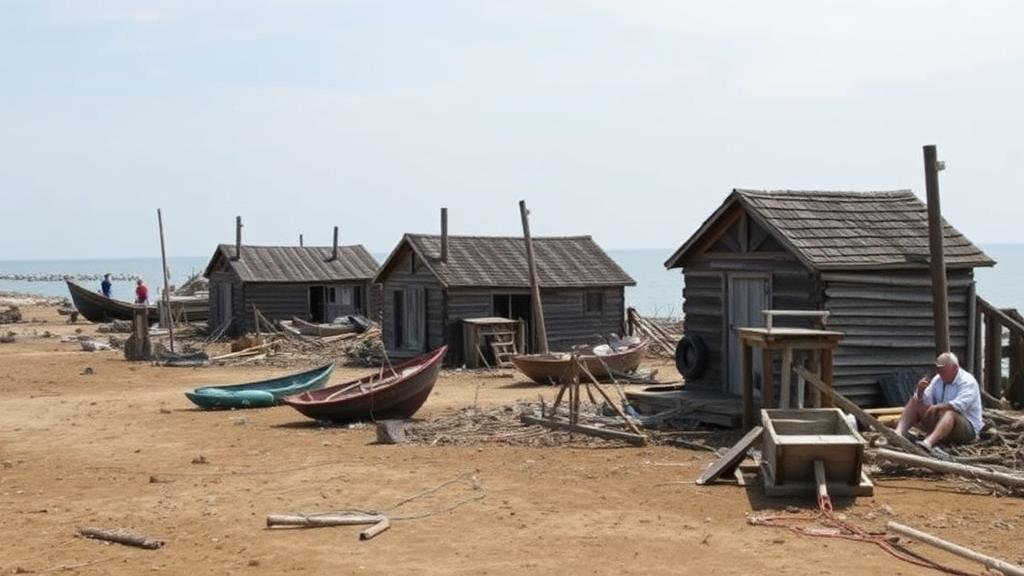Using Historical Fishing Camp Locations to Discover Coastal Relics
Using Historical Fishing Camp Locations to Discover Coastal Relics
The study of historical fishing camp locations provides valuable insights into coastal archaeology. This article explores how the geographic and historical significance of these sites can aid in uncovering coastal relics, enriching our understanding of human interaction with marine environments. By examining the locations of former fishing camps, researchers can identify potential archaeological sites that reflect historical sociocultural patterns and fishing practices.
Introduction
Coastal regions have been the focus of human activity for thousands of years. Fishing camps serve as critical touchstones for understanding ancient economies, social structures, and cultural identities. Historical fishing camps are typically situated near productive marine environments, and their locations can reveal patterns of human settlement and subsistence practices over time. This article discusses the methodology for locating historical fishing camps and the implications of such findings for coastal archaeology.
Historical Context of Fishing Camps
Fishing has long been a fundamental part of human survival and economic development. In North America, for example, indigenous peoples utilized fishing camps to harvest marine resources. According to the Smithsonian Institution, archaeological evidence suggests that fishing camps in the Pacific Northwest date back over 10,000 years. These camps were strategically placed near abundant fish populations, such as salmon during spawning seasons, indicating a deep understanding of local ecosystems.
- The Haida Nation, located along the coasts of British Columbia, established numerous fishing camps that contributed to their sociopolitical structures.
- In the Eastern United States, archaeological surveys have identified fishing camps along the shores of the Chesapeake Bay, evidencing the importance of these sites for both local tribes and European settlers.
Methodological Approaches
Several methodologies can help locate historical fishing camps and, by extension, coastal relics. e methods often involve a combination of archival research, oral histories, field surveys, and geospatial analysis.
- Archival Research: Historical documents, maps, and journals can pinpoint former fishing camp locations. For example, 18th-century trade logs might identify frequent fishing spots.
- Oral Histories: Engaging with local communities, particularly indigenous groups, can provide insights into traditional fishing practices and camp locations.
- Geospatial Analysis: Geographic Information Systems (GIS) allow researchers to layer historical data with modern environmental variables, revealing potential sites for excavations.
Case Studies
A number of successful excavation projects demonstrate how historical fishing camp locations have been pivotal in uncovering coastal relics. For example, the excavation of a 17th-century European fishing camp on the shores of Newfoundland revealed not only fish processing tools but also trade artifacts that linked the camp to broader transatlantic trade networks.
Another notable case is the investigation of indigenous fishing camps in the Gulf of Maine. Research conducted by the Maine Historical Society in 2017 identified several ancient fishing structures, contributing to a richer understanding of the areas maritime heritage. The findings supported the hypothesis that indigenous peoples employed intricate fishing techniques and managed marine resources sustainably.
Implications for Coastal Archaeology
The exploration of historical fishing camps has significant implications for coastal archaeology. By understanding these sites, researchers can glean information about human adaptation to changing environmental conditions over time. Also, the findings can assist in conservation efforts to protect vulnerable coastal heritage.
Challenges in Research
Despite the benefits of studying historical fishing camps, several challenges exist. Natural erosion, climate change, and urban development threaten the preservation of these sites. Plus, incomplete historical records can hinder research outcomes. Oceanic changes also complicate the recovery of artifacts, as shifting seabeds may bury or relocate important finds.
- Environmental Change: Rising sea levels and increased storm activity have led to the erosion of many coastal sites.
- Resource Allocation: Limited funding for archaeological research can restrict the ability to explore and preserve these historical locations.
Conclusion
The use of historical fishing camp locations as focal points for archaeological inquiry represents a promising avenue for coastal archaeology. By integrating various research methods, scholars can unearth valuable coastal relics that illuminate past human interactions with maritime ecosystems. As the field evolves, there is a critical need for continued investment in research and the development of protective measures for these culturally significant sites.
Actionable Takeaways
- Engage in community outreach to gather oral histories and local knowledge about fishing practices.
- Use GIS technology to identify and map potential fishing camp locations based on historical data.
- Advocate for funding and resources aimed at the preservation and investigation of coastal archaeological sites.


